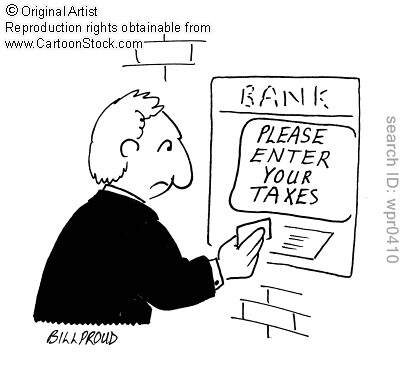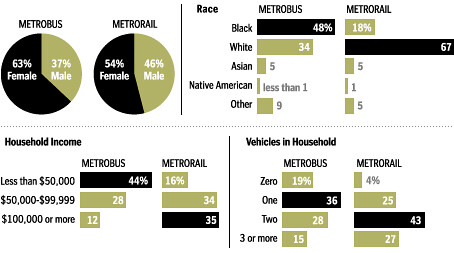Primary election special: Losing sight of what matters
I was at the Pro Bike/Pro Walk conference last week, so I was out of town during the election. (I voted the week before at one of the early polling stations.) I have plenty of thoughts about the election results, although I haven't fully pulled my thoughts together (plus it takes a long time to write one of those types of entries, a few hours).
But the column, "
I raised the election at one of the plenary sessions at the Pro Bike conference, that it appeared as if many people in the Gray camp, and other people running anti campaigns (such as Kelvin Robinson, who ran against the City Councilmember most committed to city quality of life issues, Ward 6 Councilman Tommy Wells) that quality of life, urban design, and placemaking were made out to be an issue of race and not something worth focusing on. I was pretty despondent about it.
A lot of people are pissed about how most of the local and national press is making this out to be a matter of enlightened whiteys willing to sacrifice versus African-Americans who are not.
It is an issue of who controls the city, what matters, and where to put the resources.
And it's complicated by the fact that a lot of the so called newcomers to the city aren't too connected into the city and the city government and how it functions and operates. SO they have a tendency to be reflexive and not too knowledgeable about how things really work.
And the idea of how to improve organizational functioning generally and specifically with regard to schools, as communicated by the local press (the Washington Post) and the national press with regard to education (fire teachers, open charter schools, get rid of unions, dictatorial control by Mayors, high pay for performance, getting rid of tenure) flies in the face of deeper understandings of how the K-12 education system works (see for example the lead piece in this week's Talk of the Town feature in the New Yorker, "The overblown crisis in American education," by Nicholas Lemann).
But it's no wonder why we don't improve very much societally when the major communications institutions have such a flawed understanding of how social and organizational change really works.
Going in and beating people up and being abusive, arbitrary, and capricious isn't a method that is sustainable or effective, as the election results in DC have proved.
In Urban Fortunes: Towards a Political Economy of Place, the authors are somewhat derisive of city programs that direct resources to downtown revitalization and historic preservation, seeing it as a way for the relatively well off to capture resources needed by those less well off.
I think it is more a question of a delicate balance of providing municipal resources to those people who have significant and sometimes extreme needs versus how to maintain and extend the qualities of urbanism and urbanity and "city ness" that make a center city an attractive and desirable place to live for people who have choices.
And these same people with choices, yes, the relatively well off, are also significant providers of resources--property, sales, and income tax revenues--that a city/local government desperately needs in order to be able to succeed and compete within the metropolitan landscape of competitive jurisdictions.
I wrote about this on an e-list peopled with Gray supporters (justifiably he deserved support as Vincent Gray is smart as a whip, articulate, and committed) and my point about this was derided as "trickle down" economics. (My problems with Mr. Gray come down to his supporters for the most part, which I wrote about before: "Primary election special: Why I absolutely hate politics but am likely to vote for Fenty.")
I was pretty dismissive because the person completely missed my point, that if you want to spend $1+ billion annually on public schools, and upwards of $2 billion per year on human services, the money has to come from somewhere.
Actually the one good point raised by the wack job Mayoral candidate Leo Alexander is that every 10% reduction in people needing welfare benefits--not because you kick them off the rolls, but because through assistive, integrative programming and ongoing support, they no longer need financial assistance--you save $150 million, which can be used for other things.
Basically the point I am making is that the people coming into the city as new residents, those people who are being derided, sometimes justifiably (see the column by Courtland Milloy from the Post, "A vile caldron of hatred

High income residents as ATMs for hardpressed municipalities.
Howard Gillette wrote Between justice and beauty: race, planning, and the failure of urban policy in Washington, D.C. about the tension between what we might call "placemaking" and "access to the resources and spoils" within the city and how the city is governed and managed.
The difference between the period covered in Gillette's book and today is the difference between direct federal control and indirect federal control of the city, and the focus on redistributive justice versus placemaking and quality of life.
Without acknowledging all of the failures of the current administration, which for the most part has ridden on the coat tails of programs and processes created under the previous administration, for the most part, the so called analyses in the national and local press are flawed, and we won't get anywhere going forward.
But it remains a fact that bike lanes, sustainable transportation, historic preservation, placemaking initiatives, design review, dog parks, walkability, etc., aren't the kinds of issues that motivate people concerned mostly with redistributive justice.
The sad fact is that this has been the case for as long as I have lived in the city, which as of last week, has been 23 years.
On the 1988 election ballot was a referendum for a "bottle bill", a law imposing a deposit on beverage containers. The beverage industry made it out to be a race issue, something that whitey environmentalists were trying to put over old black ladies. Of course, they roped in the African-American ministers to their cause with donations, and it did end up being a race issue. The run up to that election was very contentious, on this and other issues.
So how far have we come, really?
The irony is that for example, the redistributive justice people fight improvements to transit via streetcar, when the most significant advantages would accrue to the people currently riding surface transit, who tend to be low income.
These types of ironies run the board.

Washington Post graphic.
Labels: civic engagement, electoral politics and influence, participatory democracy and empowered participation, progressive urban political agenda, urban design/placemaking, urban revitalization



0 Comments:
Post a Comment
<< Home